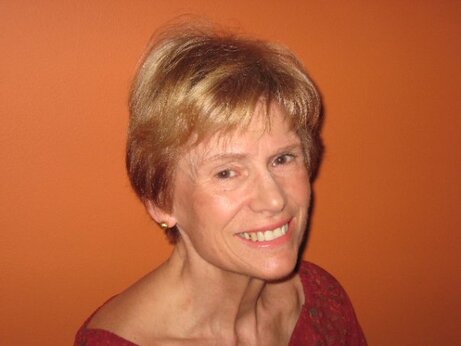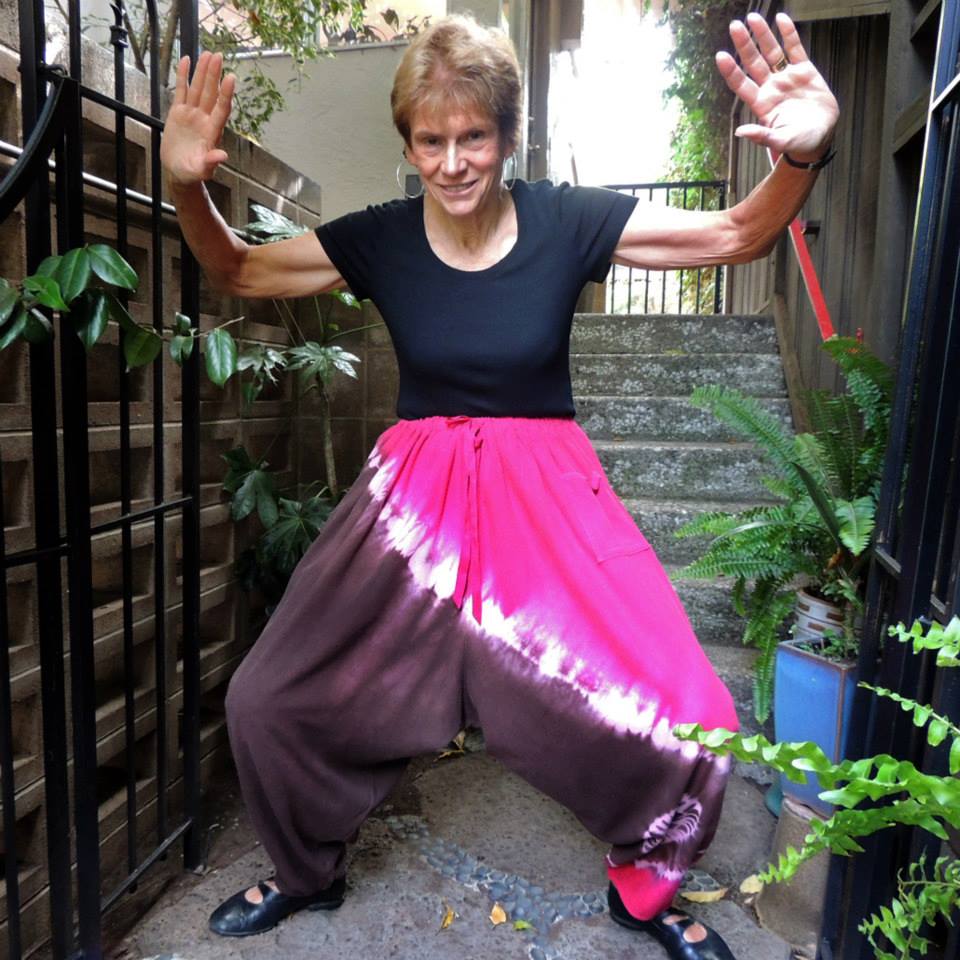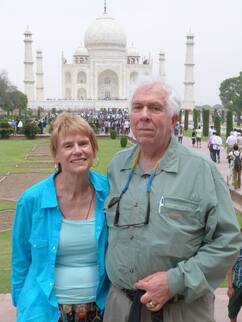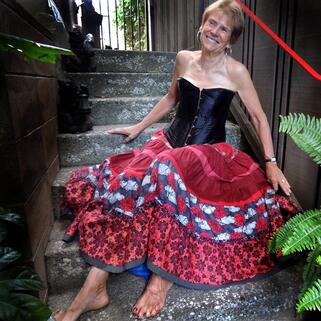|
Marina Bear
Celebrated choreographer, teacher and author, Marina’s talents and enthusiasms are abundant. She and her husband John attended a 10-day teacher training in Glastonbury in 1985, and since 1987 have been coordinating Bay Area events with a community of teachers. These include weekly Circle Dance nights, West Coast dance camps and weekends with visiting guest teachers. Marina and John have hosted Bethan and Stefan Freedman during their annual Bay area teaching visits over the past 17 years. Marina and John have travelled widely facilitating Circle Dance, and Marina is celebrated worldwide for her iconic and diverse choreographies which include, Nightwalking, Doch an Dorach, Be |
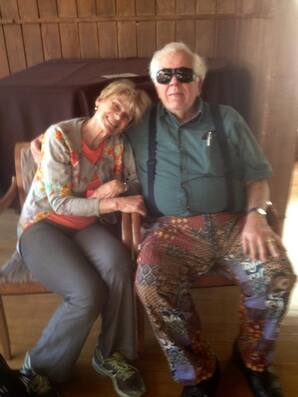
Like A Bird and Circle Chant.
Marina’s skills include:
Arts and crafts; she makes glorious, memorable centres for dance events.
Cooking; some of Marina’s books are recipe books, and for many years Marina cooked large tasty hotpots for a community initiative to support the homeless. Her children, grandchildren (and dog) have also benefitted from this talent!
Marina’s skills include:
- Writing; she is author of several published books and co-author of several more with John Bear.
- Academic Teaching; Marina taught ‘Ethics and World religions’ for many years at Berkeley City College.
Arts and crafts; she makes glorious, memorable centres for dance events.
Cooking; some of Marina’s books are recipe books, and for many years Marina cooked large tasty hotpots for a community initiative to support the homeless. Her children, grandchildren (and dog) have also benefitted from this talent!
|
Marina writes:
“At our summer dance camp, there’s usually at least one person who was dragged along by an enthusiastic friend or who is taking a courageous leap towards some imagined goal. It’s wonderful when, at the end of the camp, someone comes up to you and says, ‘I didn’t think I could do it, but I did it! And I love it! Where can I do more?’ "A Circle Dance teacher strives to build a safe, supportive environment that involves encouraging dancers who may have difficulty ‘getting’ the steps to do what they can. We adapt dances on the fly to accommodate people’s obstacles. If you can’t turn easily in three steps, just take three walking steps to keep up with the movement of the circle. If your arm hurts and you can’t do a shoulder hold, we’ll find another hold for you, or put you at the end of a line on your ‘good side.’ The aim is always to make the experience of the dance accessible to the people who’ve come. |
"I haven’t mentioned the use of the word ‘sacred.’ Do we have to believe something to join in? Will it conflict with something I already believe? The challenge for us is to convey the good stuff we do, the accessibility, the friendliness, the depth of experience possible without making any of it sound mandatory. We can work on that.
"A Circle Dance evening always has a definitive ending. It doesn’t just stop. Most often there’s a quiet, meditative dance done to close the evening and send us off in a peaceful frame of mind. When possible, we like to lower the lights and sometimes we’ll dance with just the light from the candles in the center. Some dancers say the last dances are the reason they come—the experience is unique.”
USEFUL FOR NEW TEACHERS:
https://www.facebook.com/SacredCircle/videos/10152336157760747
Download a Teachers' Manual:
"A Circle Dance evening always has a definitive ending. It doesn’t just stop. Most often there’s a quiet, meditative dance done to close the evening and send us off in a peaceful frame of mind. When possible, we like to lower the lights and sometimes we’ll dance with just the light from the candles in the center. Some dancers say the last dances are the reason they come—the experience is unique.”
USEFUL FOR NEW TEACHERS:
https://www.facebook.com/SacredCircle/videos/10152336157760747
Download a Teachers' Manual:
| teachers_manual_2014_feb.pdf | |
| File Size: | 6570 kb |
| File Type: | |
